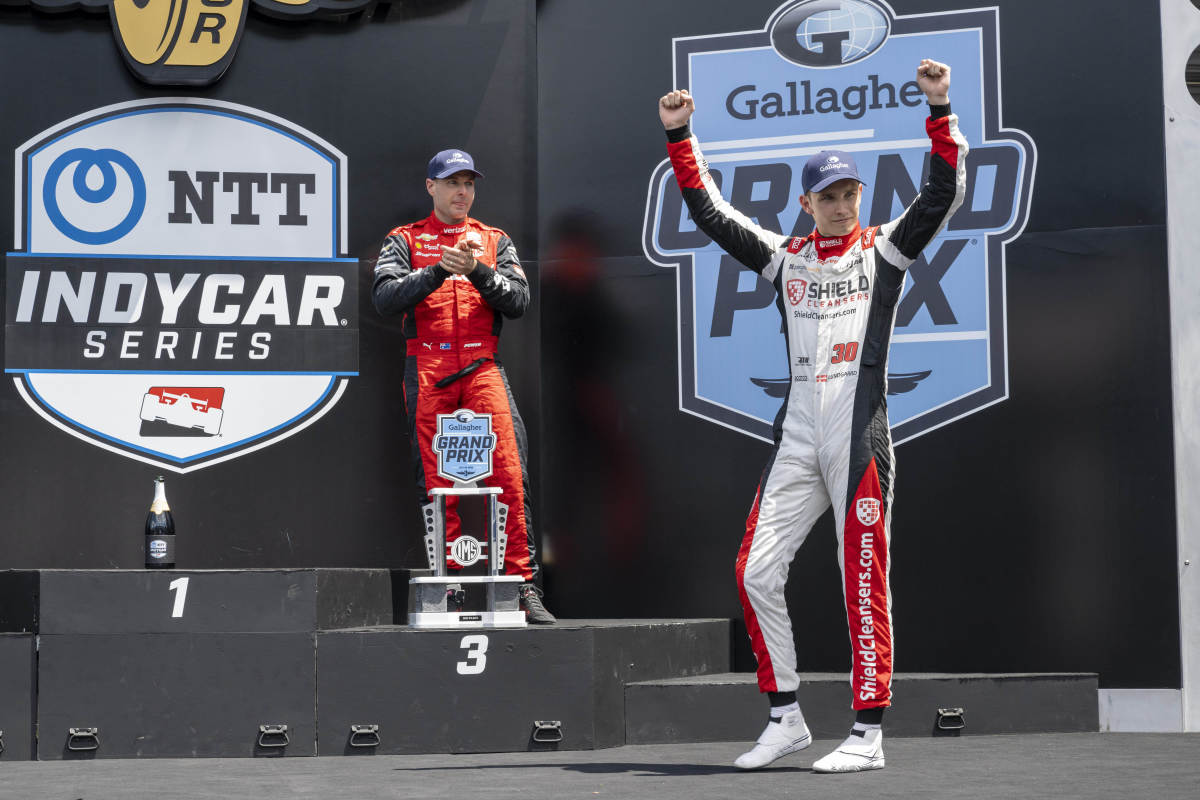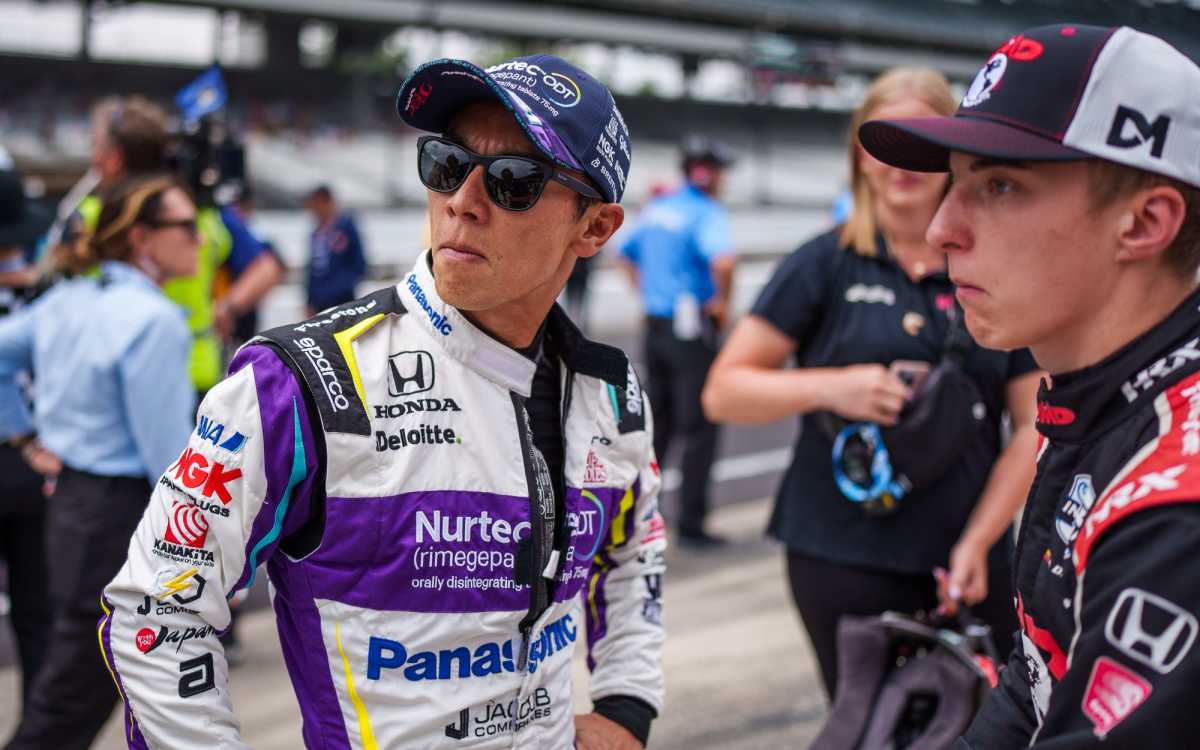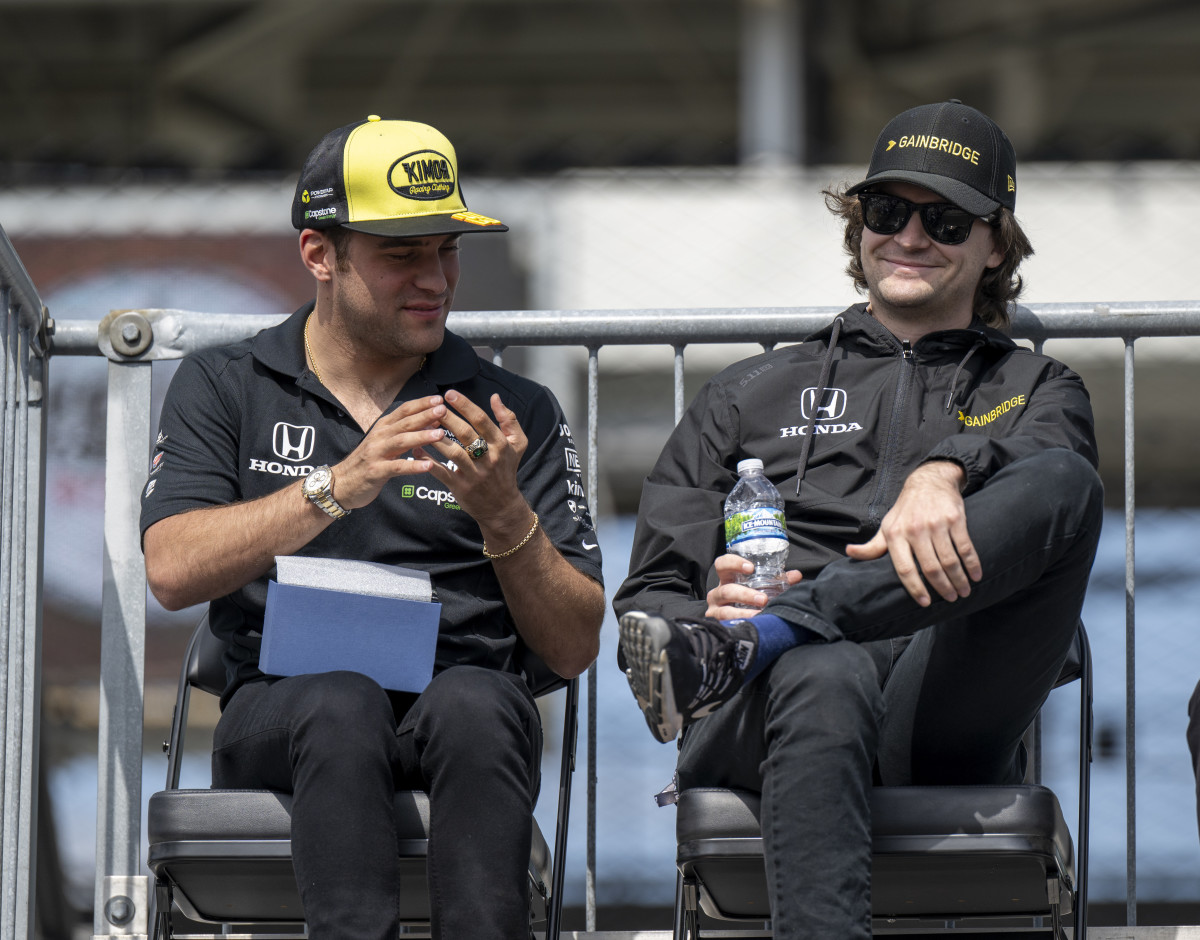In IndyCar, the Zoomers are ready to take over

In IndyCar, Gen Z really are the Zoomers.
The term, which is sometimes used for those born after 1997, is a perfect fit for the series' new group of successful young drivers, including Colton Herta, Pato O’Ward, Alex Palou and Rinus VeeKay.
And this year, a group of five rookies are trying to add their names to the list of those drivers who will be considered the future of the series. And while the “generation” concept has been beaten to death in social media, with a bit of squinting it’s possible to see a real generational divide in the IndyCar field.
Fifteen years after the last race was run under the Champ Car banner, “generation split” still is going strong. Of the drivers still in the series, Scott Dixon, Will Power, Hélio Castroneves, Tony Kanaan, Juan Pablo Montoya and Ed Carpenter were all racing full-time in the days of CART/Champ Car competing with IRL for the top open-wheel drivers in America, while Takuma Sato and Jimmie Johnson were active in Fomula 1 and NASCAR respectively at the time.
Now 15 years after cars last took to the track under the Champ Car banner, “generation split” continues to not only fill a quarter of the IndyCar field but its membership includes the drivers currently first and second atop the standings heading into this weekend's race at WorldWide Technology Raceway (aka Gateway, near St. Louis).
Perhaps not exactly part of “generation split,” but Graham Rahal and Simon Pagenaud each got a chance in Champ Car during the series' final year, while Marco Andretti was starting in the IRL at the same time. But ever generational divide has its tweeners.
While the split was over in 2008, its effects were not. One of the main consequences was the shift of the focus of American racing to NASCAR, and with it, the desired path for the majority of young drivers in America. Few new challengers emerged in IndyCar, and the “splitters” continued to dominate the standings.
The top new young drivers of “generation George” included Raphael Matos (Rookie of the Year and 0 career wins), Alex Lloyd (ROY and 0 career wins), J. R. Hildebrand (0 wins, although still active), Charlie Kimball (1 win), James Jakes (0 wins), Sebastián Saavedra (0 wins) and well, you get the point.
While “generation split” was piling up championships and Indy 500 wins, “generation George” was only able to muster a few highlights.
James Hinchcliffe had 6 wins and a couple of chances at good cars, but ultimately never ranked among the top of the standings at the end of the season.
Mike Conway scored 4 wins in 73 races, before an unwillingness to compete on ovals ended his time with the series.
As “generation George” drivers who came up through the IndyCar ladder such as Kimball, Gabby Chaves, Ed Jones, and Spencer Pigot came and went, only Josef Newgarden was able to join the splitters in the ranks of the series elite.
Alexander Rossi would lead a charge of drivers who entered IndyCar from outside series in the 2010s (Rossi came on the IndyCar scene from Formula One in 2016 and promptly won the 100th Running of the Indianapolis 500 that year), and then was joined by fellow Formula 1 refugee Marcus Ericsson in 2019, who then in 2022 joined Rossi and another F1 refugee, Sato (a two-time winner), in winning the Indy 500.
So, what about the Penske generation, IndyCar’s own group of Zoomers? Besides the core four coming into 2022, the year’s five-strong class of young rookies has shown flashes of promise, but thus far there have been far more non-finishes than trophies.

Perhaps the most notable of this season's quintet of rookies is Christian Lundgaard, the 21-year-old transfer from the world of Formula 1, who has bragging rights to the group's sole podium (a second on the Indy Road Course), and six of their ten top 10 finishes. With Rahal Letterman Lannigan Racing having Lundgaard signed and in the fold for at least one more year, the team might be dreaming of finally returning to the championship fight in 2023.
It's not uncommon for drivers to fail to produce big points results in their rookie season – just ask Alex Palou, who finished 16th a year before winning the championship.
So for Kyle Kirkwood and David Malukas, the key is to have both patience and confidence that the results will come. The pair finished first and second in Indy Lights in 2021, combining to win 17 of the 20 races, and both have already shown enough in 2022 to secure next year’s employment.
Car owner Dayle Coyle and veteran teammate Takuma Sato have had nothing but praise for Malukas, who has been qualifying and finishing in the middle of the pack in recent races. The team is looking forward to staying together as a unit next year and keeping the 20-year-old Malukas teamed with Sato, who was driving in Formula 1 the year Malukas was born.

Kirkwood, meanwhile, will be departing A.J. Foyt Racing at the end of this season, having already been signed to take over at Andretti for the departing Rossi in 2023. However, it will be vital for the 23-year-old that he starts getting in the habit of bringing cars home in one piece sooner rather than later.
All race car drivers have nerves of steel, but few would have considered taking the chance on themselves that Callum Illott did coming into this season. Never completely out of the discussion in Formula 1 where he’d been successful in the junior series, Illott saw the logjam for opportunities there and decided to risk going full-time with the small, single entry IndyCar team, Juncos Hollinger Racing.
Although his best finish so far is an eighth on the Indianapolis Road Course, the team’s effort this year has to be considered a massive success. While an early crash in the Indy 500 (which also forced him to miss the next race in Detroit) have him down in the standings, he’s been steadily moving up in the second half of the season.
For a 23-year-old on unfamiliar tracks with an inexperienced team, the British rookie is already starting to look more like a veteran. Illott is ready to continue betting on himself and the team, having signed a long-term deal in July (despite technically still being part of the Ferrari organization), as Illott and team owner Ricardo Juncos seem to share a vision for a team that has the potential to compete.
At 22, Devlin DeFrancesco likely wasn’t ready for the challenge facing him this year of stepping into a full-time drive with one of the series top teams in Andretti Autosports. While he’s contracted with the team through 2023, there are already indications that next year’s Andretti shakeup might include a replacement for the Canadian driver, who has thus far finished no higher than 15th.

DeFrancesco was something of an experiment for the team, whose owner Michael Andretti had felt factors outside the driver’s control had held him back in the feeder series. Should a change be made, there will likely be more opportunities in the future for the young racer, but with the amount of talent currently in the series, he’ll need to make the most of them quickly.
And of course, the Penske generation is just beginning. 23-year-old Linus Lundqvist has been slicing through Indy Lights this year, and has won championships at numerous junior levels. Dale Coyne has already expressed interest in adding a third car to his team for the Swede.
Over in Europe, Formula 2 leader Felipe Drugovich is still without a future destination in Formula 1, and should their current game of musical chairs end up with all seats taken, he might be turning his eyes toward IndyCar.
The exact team logos on their firesuits may change, but when IndyCar’s veterans finally decide they’ve crossed the finish lines for the last time in their careers, there’s no shortage of young speedsters ready to take over the spotlight and start fighting off the next group of youngsters trying to break in.
